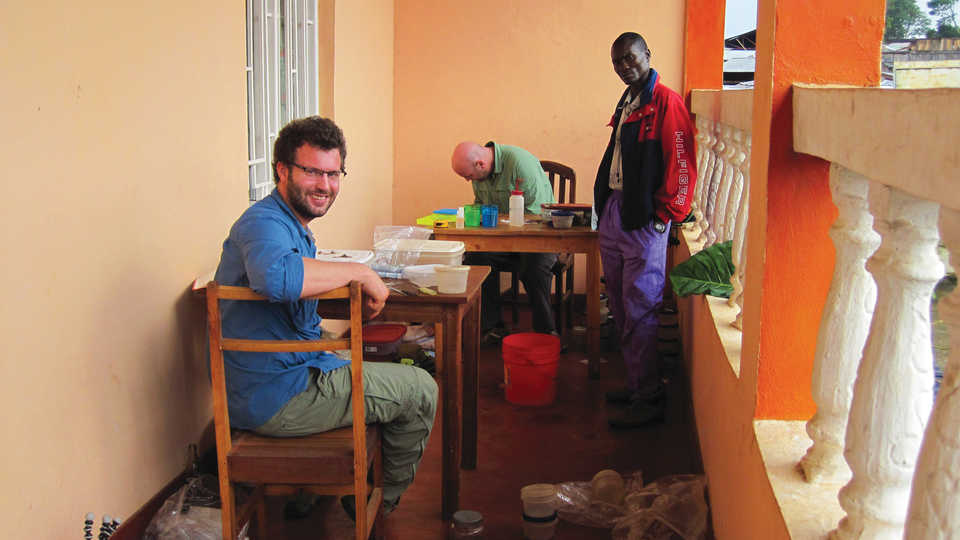Saving Cameroon's Endangered Frogs
David Blackburn, PhD
Research Associate, Herpetology
Brink of Extinction

Central Africa represents a region of exceptional biodiversity, but not enough is yet known about the origins of—and threats to—its species richness. With amphibian populations declining at alarming rates in this area and around the world, David Blackburn leads efforts to explore and sustain Cameroonian frogs on the brink of extinction.
“Habitat destruction is the single greatest threat to frogs worldwide,” says Blackburn. “Xenopus longipes, the Lake Oku clawed frog is a small, slow-moving water-dweller found in only one place in the world. It’s critical we study this species before its home is forever altered by human encroachment.”
Blackburn is cataloging specimens, recording frog calls, and collecting tissue samples in an effort to learn more about amphibian diversity and evolution—and to successfully develop captive breeding programs for endangered frogs (like X. longipes) that have never before been kept in captivity.
Exploring Remote Habitats

Lake Oku, nestled in a crater high atop Cameroon’s second-tallest mountain, is home to several species of critically endangered frogs. Blackburn and other herpetologists find themselves racing the clock to study and protect local frog species before external threats— including pollution and the possibility of introduced fish predators—dash hopes for the future of the region’s amphibian populations.
With each passing year, increased tourism and human encroachment threaten Lake Oku’s fragile aquatic ecosystem. Blackburn has watched Lake Oku transform from a relatively remote expedition site to a popular destination complete with a lakeside road and brand-new guest cabins.
In order to safeguard endangered amphibian populations at risk of extinction in the wild, Blackburn spearheaded the Academy’s captive breeding initiative with the clawed frog as one of its first subjects. Beginning in 2012, Blackburn partnered with Steinhart Aquarium staff to study the development, reproduction, diet, and husbandry of X. longipes—with thrilling results.
Up-close Encounters

Visitors to the Academy’s four-story rainforest dome can view the first population of Lake Oku clawed frogs bred successfully in captivity. Captive breeding efforts not only give scientists a chance to uncover the biological mysteries of little-known species—they promote public awareness and help protect endangered populations from an uncertain future.
Blackburn is committed to empowering the next generation of scientists and frog advocates, and works with youth in the U.S. and Cameroon to “get outside” and discover why amphibians are sentinel species worthy of global protection. The Academy’s continued captive amphibian breeding programs—combined with the research and education efforts of scientists like Blackburn—help us understand and safely guard Earth’s remarkable biodiversity.

